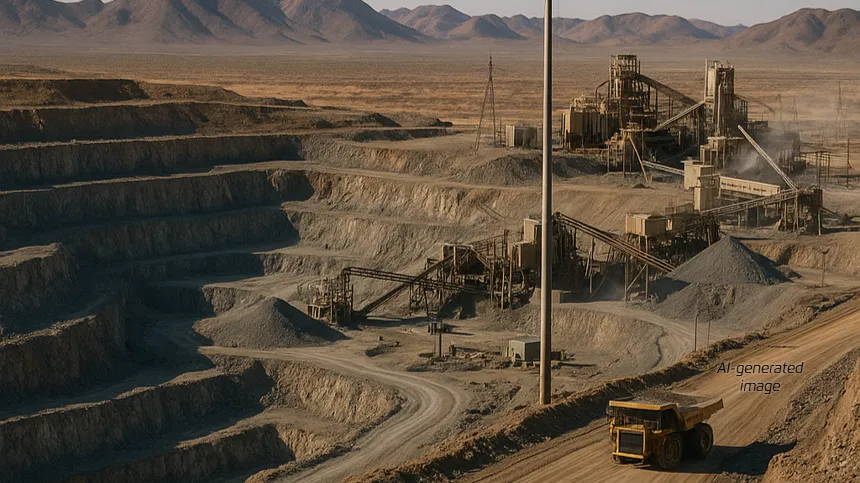Haib Copper Project to Deliver 40,000 Tonnes of Copper Annually in Namibia

Namibia’s Haib Copper Project targets 40,000 tonnes of copper annually, with a US$1.35B NPV and 35% IRR, reinforcing its role in green energy supply.
The Haib Copper Project in Namibia’s ||Karas Region is emerging as one of southern Africa’s most promising base metal developments, with the potential to deliver between 35,000 and 40,000 tonnes of copper annually. According to Koryx Copper Inc.’s Preliminary Economic Assessment (PEA) filed on October 8, 2025, the project demonstrates robust financial metrics, advanced technical design, and significant strategic value for both Namibia and the global energy transition. Over its anticipated 23-year mine life, Haib is expected to combine operational efficiency with sustainable development, reinforcing Namibia’s position as a key regional supplier of critical minerals.
The PEA outlines a dual-stream processing configuration designed to maximize recovery across varying ore grades. An 8 million tonnes per annum (Mtpa) concentrator will process higher-grade material, while a 17 Mtpa heap-leach facility will treat lower-grade ore, resulting in a combined throughput of approximately 25 Mtpa from open-pit mining operations. Targeting copper grades of 0.3% to 0.5%, this model aims to balance production scale with cost competitiveness. The project forecasts an average annual copper output of around 38,000 tonnes, generating a post-tax Net Present Value (NPV) of US$1.35 billion and an Internal Rate of Return (IRR) of 35%, figures that underscore the project’s commercial appeal.
With a payback period of just 3.5 years and a capital cost of approximately US$340 million (N$6.4 billion), the Haib Project is positioned as a low-cost, high-return investment. Sustaining capital over its life is estimated at US$100 million, while an operating cost of US$1.28 per pound places Haib among the most cost-efficient porphyry copper operations globally. The project’s metallurgical testwork has yielded recoveries of up to 87% from flotation and 65% from heap leaching, confirming its strong technical fundamentals. Construction is expected to take 24 to 30 months following the final investment decision, paving the way for first copper cathode production by 2028.
Beyond its economics, Haib carries strategic importance for Namibia’s industrialization and green energy aspirations. Copper is a cornerstone of renewable infrastructure, integral to electric vehicles, solar panels, and wind turbines, and Haib’s production will contribute meaningfully to global clean energy supply chains. The project’s flexible processing flowsheet, stable geology, and Namibia’s investor-friendly regulatory environment further enhance its long-term viability.
If executed as planned, the Haib Copper Project could redefine Namibia’s role in the global mining landscape. It promises to generate substantial fiscal revenue, create employment opportunities, and stimulate regional development in the ||Karas Region. Moreover, by anchoring Namibia’s growing reputation as a responsible and low-risk mining jurisdiction, Haib may catalyze further foreign investment into Africa’s copper and critical mineral sectors, strengthening the continent’s contribution to the decarbonized global economy.
Mini-Glossary
- Preliminary Economic Assessment (PEA): An early-stage study evaluating a mining project’s potential profitability and technical feasibility.
- Heap Leach: A processing technique that extracts metals by percolating chemical solutions through piles of crushed ore.
- Concentrator: A plant where ore is processed to increase the concentration of valuable minerals.
- Net Present Value (NPV): A financial metric estimating the present value of future cash flows, used to assess project viability.
- Internal Rate of Return (IRR): The rate at which a project’s net present value equals zero, used to measure profitability.
- Porphyry Copper Deposit: A large, low-grade copper deposit typically mined through open-pit methods.
- Flowsheet: The detailed plan outlining a processing plant’s operations and stages of mineral recovery.
